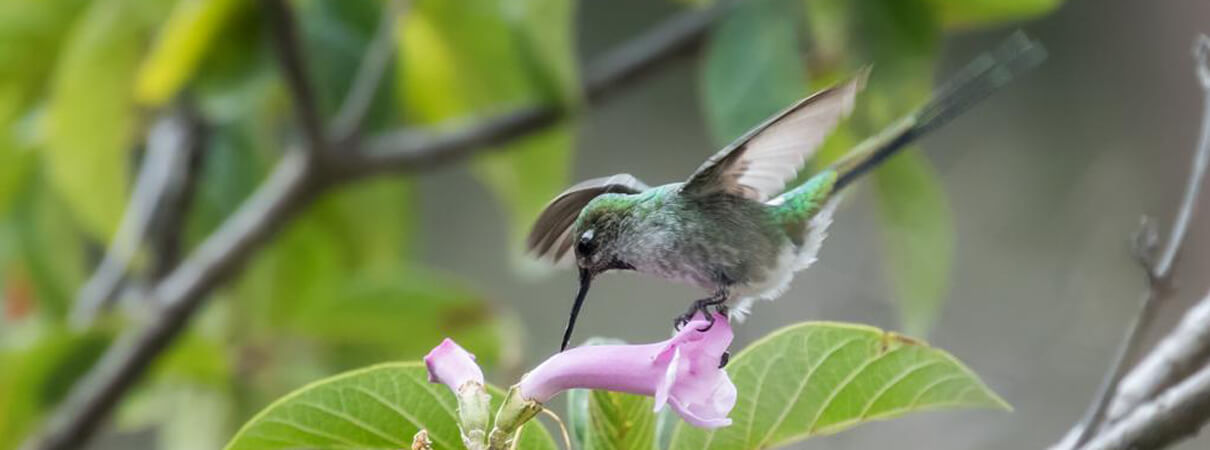 The Gray-bellied Comet is more attractive than its plain-sounding name implies. In the right light, the upper sides of this large hummingbird shimmer with greens, blues, and bronzy-oranges. Males have a violet-blue throat (gorget), and both sexes have long tails similar to those of the Swallow-tailed Hummingbird and Long-tailed Sylph.
The Gray-bellied Comet is more attractive than its plain-sounding name implies. In the right light, the upper sides of this large hummingbird shimmer with greens, blues, and bronzy-oranges. Males have a violet-blue throat (gorget), and both sexes have long tails similar to those of the Swallow-tailed Hummingbird and Long-tailed Sylph.
This hummingbird is so local and uncommon that sightings of it were infrequent for many years. It was re-found in the early 1990s and is now spotted regularly within its limited range, which consists of five fragmented populations on the Pacific slope of the Andes in north-central Peru.
Like other restricted-range species such as Stresemann's Bristlefront and White-bellied Cinclodes, Gray-bellied Comet is especially vulnerable to habitat loss.
Birds of a Dry Country
Gray-bellied Comets are found on arid mountain slopes and canyons with sparse vegetation, usually between 9,020 and 10,400 feet. Endemism is high among birds of this arid Andean region of Peru, with many species — including Gray-bellied Comet, Striated Earthcreeper, and Rufous-backed Inca-Finch — found nowhere else.
Desert Pollinator
Like other hummingbirds of arid habitats, the Gray-bellied Comet is an important pollinator of desert cacti, shrubs, and trees; it particularly favors flowering agave and bromeliads found on steep slopes and in deep ravines. Costa's Hummingbird and Honduran Emerald also play this key pollinating role.
Gray-bellied Comet nests were first documented in 1999; in both of these two cases, the female hummingbird had built a well-camouflaged, pouch-like nest below an overhang of earth and dangling roots at a road-cut.
Sign up for ABC's eNews to learn how you can help protect birds

Female Gray-bellied Comet by Nick Athanas, Tropical Birding
Helping a Bird in Need
Responding to the destruction of key habitat for the endangered Gray-bellied Comet in a fire two months ago, ABC and our partner ECOAN are building a tree nursery to produce over 30,000 native trees and shrubs, in cooperation with local communities and institutions.
This restoration effort, developed by ECOAN in coordination with local professionals in Cajamarca, is central to the conservation of this and other endangered species at the Comet's primary habitat, the valley of Sangal. The local environmental education center is providing information to the community on this initiative.
ABC and ECOAN will continue to look for opportunities to implement more conservation strategies in this important zone.
ABC has already had success in establishing partnerships that protect habitat-limited species such as Gray-bellied Comet; many of those, including Yellow-headed Brush-Finch and Blue-throated Macaw, can be found throughout our reserve network across Central and South America and the Caribbean.
Donate to support ABC's conservation mission!



















































